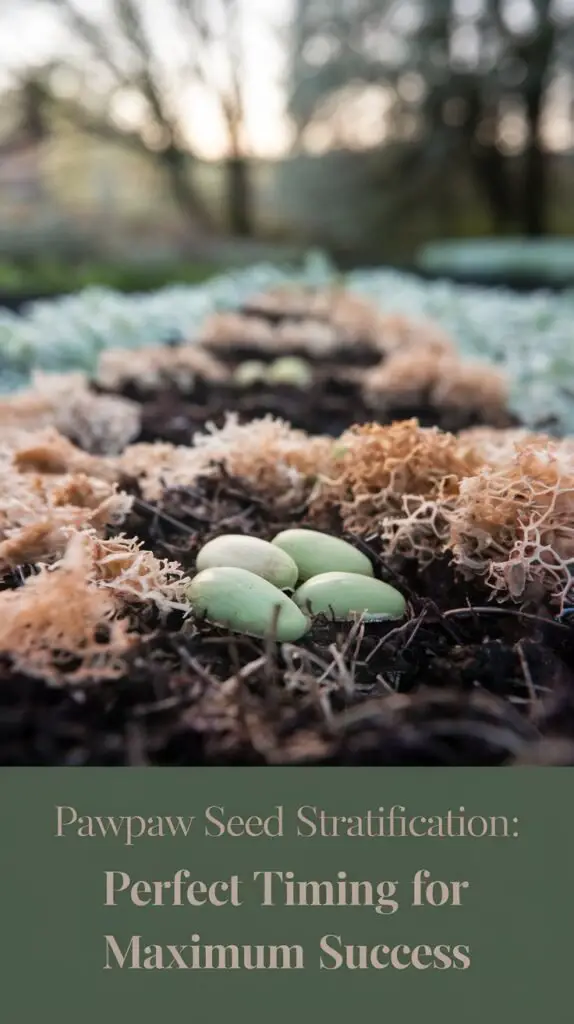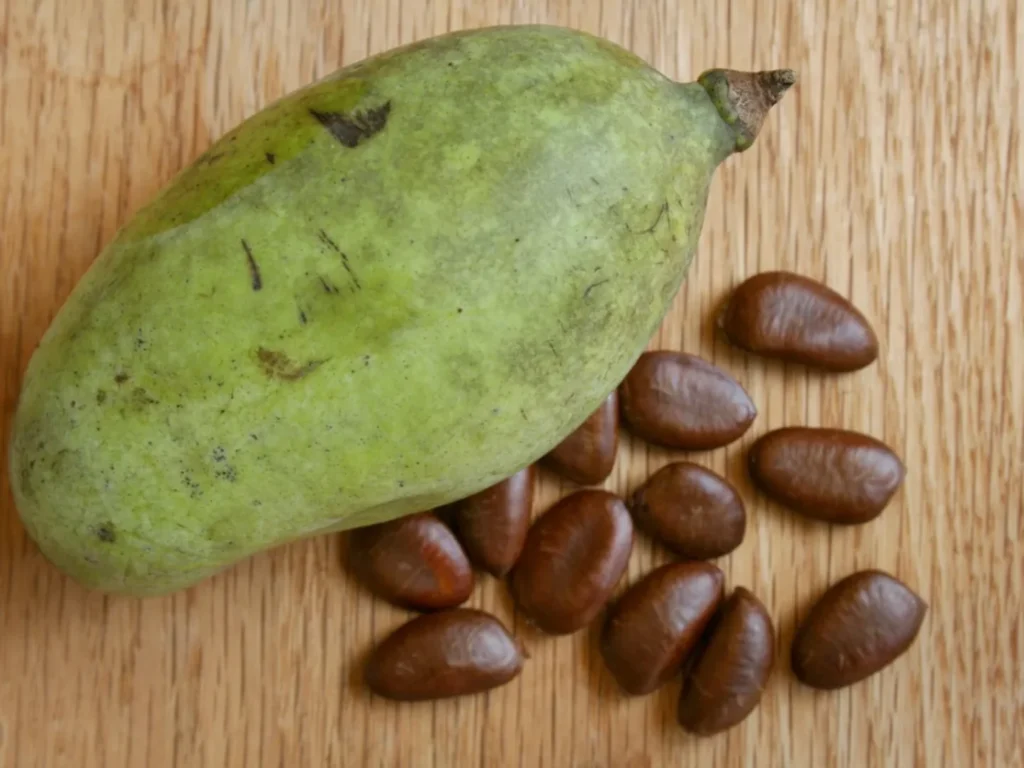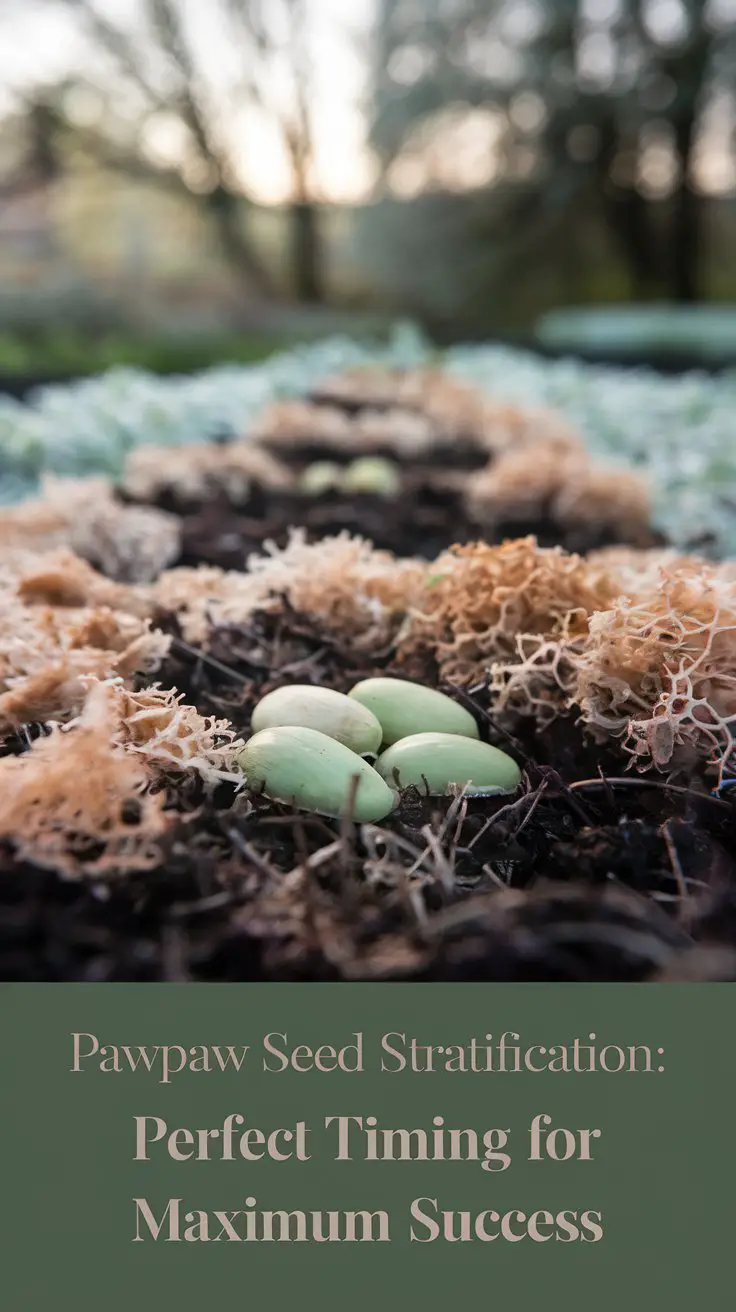Master pawpaw seed stratification with expert timing, temperature control, and moisture management. Learn how to maximize germination success and grow thriving pawpaw trees.
Pawpaw seed stratification requires 90-120 days of cold, moist conditions at 32-40°F (0-4°C) for optimal germination. Maintain consistent moisture and temperature, checking seeds weekly. Start stratification in late fall for spring planting to achieve the highest success rate in transforming your pawpaw seeds into thriving trees.
Hello, I’m Ashley Scott, a horticulturist specializing in native fruit trees. With over 15 years of experience in pawpaw cultivation, I’m excited to share my expertise on the crucial process of pawpaw seed stratification. This guide will help you achieve maximum germination success and set the foundation for healthy pawpaw trees.
Understanding Pawpaw Seed Stratification

Pawpaw (Asimina triloba) seeds require a period of cold stratification to break dormancy and trigger germination. This process mimics the natural winter conditions that pawpaw seeds would experience in their native habitat.
Key points about pawpaw seed stratification:
- Simulates winter conditions
- Breaks seed dormancy
- Essential for successful germination
- Requires careful timing and monitoring
The Perfect Timing for Pawpaw Seed Stratification

Timing is crucial for successful pawpaw seed stratification. Here’s how to get it right:
- Seed Collection: Harvest seeds from ripe fruits in late summer or early fall.
- Cleaning: Remove all pulp and dry seeds for 1-2 days.
- Stratification Start: Begin the process in late fall (November-December).
- Duration: Maintain stratification for 90-120 days.
- Planting: Sow stratified seeds in spring when soil temperatures reach 60°F (15°C).
According to the Kentucky State University Pawpaw Research Program, this timing aligns with the natural cycle of pawpaw trees and optimizes germination rates.
Temperature Control for Optimal Stratification
Maintaining the correct temperature range is critical for pawpaw seed stratification:
- Ideal temperature: 32-40°F (0-4°C)
- Consistent cooling: Use a refrigerator or controlled cold room
- Avoid freezing: Temperatures below 32°F (0°C) can damage seeds
- Gradual warming: Slowly increase temperature when stratification period ends
For precise temperature control, consider using a digital thermometer with a probe to monitor your stratification medium.
Moisture Management During Stratification
Proper moisture levels are essential for successful pawpaw seed stratification:
- Use a moistened medium (e.g., sand, peat moss, or vermiculite)
- Maintain consistent moisture without waterlogging
- Check moisture levels weekly
- Mist or lightly water if medium feels dry
- Avoid excessive moisture to prevent mold growth
The North American Pawpaw Growers Association recommends using a zip-lock bag or sealed container to help retain moisture during stratification.
Monitoring Techniques for Stratification Success
Regular monitoring ensures optimal conditions throughout the stratification period:
- Weekly checks: Inspect seeds and medium for any signs of mold or decay
- Moisture assessment: Squeeze a small amount of medium to test moisture content
- Temperature verification: Use a thermometer to confirm consistent cooling
- Seed examination: Look for signs of sprouting near the end of the stratification period
- Record keeping: Maintain a log of observations and any adjustments made
Post-Stratification Care and Planting
After the stratification period, handle your pawpaw seeds with care:
- Gradually warm seeds to room temperature over 24-48 hours
- Prepare a well-draining potting mix or garden bed
- Plant seeds 1 inch deep and 6-8 inches apart
- Keep soil consistently moist but not waterlogged
- Provide partial shade for young seedlings
For more detailed information on pawpaw cultivation, consult the Pawpaw Planting Guide from Plants for a Future.
Troubleshooting Common Stratification Issues
Even with careful attention, problems can arise during pawpaw seed stratification:
- Mold growth: Reduce moisture and increase air circulation
- Premature sprouting: Lower temperature slightly or plant immediately
- Seed rot: Ensure proper sanitation and avoid overwatering
- Low germination rates: Extend stratification period or adjust temperature
Mastering pawpaw seed stratification is key to successfully growing these unique native trees. By carefully controlling timing, temperature, and moisture, you can maximize germination rates and set the stage for healthy pawpaw trees. Remember, patience is crucial – the stratification process takes time, but the reward of homegrown pawpaws is well worth the effort.
With these techniques, you’re well-equipped to transform your pawpaw seeds into thriving trees. Happy growing!
For more gardening tips and plant care guides, visit usagardenhub.com





One comment on “Pawpaw Seed Stratification : Perfect Timing for Maximum Success”